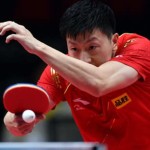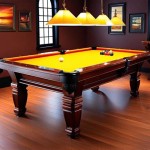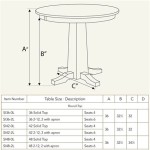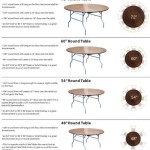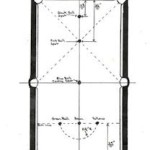8 Foot Pool Table Dimensions In Inches: A Comprehensive Guide
Understanding the dimensions of an 8-foot pool table, expressed in inches, is crucial for various reasons, ranging from space planning and installation to ensuring fair and consistent gameplay. This article provides a detailed exploration of these dimensions, covering the playing surface, the overall footprint, and other related measurements. It also delves into how these dimensions impact the game itself and the environment in which the table is placed.
The term "8-foot pool table" refers to the nominal length of the playing surface measured along the long side. However, the actual dimensions, including the frame, rails, and pockets, extend beyond this nominal size. Accurate measurements are essential for selecting the correct size of room, choosing appropriate accessories, and understanding the nuances of gameplay on an 8-foot table. This article avoids conversational tones and focuses on providing precise and factual information to those seeking a thorough understanding of 8-foot pool table dimensions.
Key Point 1: Playing Surface Dimensions
The defining characteristic of an 8-foot pool table is the size of its playing surface. The playing surface refers to the area enclosed by the cushions, where the billiard balls are actually placed and moved. Standardized dimensions for this area are critical for ensuring a consistent playing experience across different tables.
The standardized playing surface dimensions for an 8-foot pool table typically measure 44 inches wide by 88 inches long. These dimensions are not arbitrary; they are carefully proportioned to adhere to a 2:1 length-to-width ratio, a characteristic that has been refined over many years to optimize gameplay mechanics. This ratio impacts the angles of shots, the distance balls travel, and the overall strategy employed by players.
It is important to note that slight variations, perhaps a fraction of an inch, may exist between different manufacturers or specific models. However, reputable manufacturers adhere closely to these standard dimensions to ensure conformity with established norms. Any significant deviation from these dimensions can alter the gameplay experience and potentially impact the fairness of competition.
The slate bed beneath the cloth forms the core of the playing surface. The slate's thickness and flatness are also crucial for a high-quality pool table. Common slate thicknesses range from ¾ inch to 1 inch, with thicker slate generally preferred for its superior resistance to warping and its ability to provide a more level and stable playing surface. The heavier the slate, the less likely the table is to shift or vibrate during gameplay, leading to improved ball roll and accuracy.
The accuracy of these measurements is paramount. Pool table installers use precise measuring tools to ensure the slate bed is perfectly level and that the cloth is stretched taut without any wrinkles or imperfections. Even minor discrepancies in the playing surface can affect ball trajectory and make accurate shots more difficult.
Key Point 2: Overall Table Footprint Dimensions
While the playing surface dimensions define the area where balls are struck, the overall footprint of an 8-foot pool table determines the space it occupies within a room. This footprint includes the playing surface, the rails, the frame, and any overhang.
The overall footprint of an 8-foot pool table typically measures around 55 inches wide by 99 inches long. These figures represent the outer dimensions of the table, accounting for the width of the rails and the frame surrounding the playing surface. This is a crucial consideration when planning the layout of a room where the table will be placed. A table advertised as "8-foot" refers to the playing surface, but the actual space needed will always be larger than 44 inches by 88 inches.
Accurate measurements of the overall footprint are essential for determining the required room size. Leaving sufficient space around the table for players to comfortably maneuver and take shots is paramount. Ideally, there should be at least 5 feet of clearance from the edge of the table to any wall or obstruction on all sides. This allows players to use a standard 58-inch pool cue without hitting the wall and ensures a comfortable playing environment.
Smaller rooms may necessitate the use of shorter cues, but this can impact gameplay and limit the range of shots available to players. Therefore, it is generally recommended to select a table size that fits comfortably within the available space, allowing for adequate cueing room. Ignoring the overall footprint dimensions can lead to a cramped and frustrating playing experience.
Variations in the overall footprint may arise due to differences in frame design or the width of the rails used by different manufacturers. Some tables may feature wider or more decorative rails, which can increase the overall footprint by a few inches. Therefore, it is always advisable to consult the manufacturer's specifications for the specific model of table being considered to obtain the most accurate measurements.
Key Point 3: Related Dimensions and Considerations
Beyond the playing surface and overall footprint, several other dimensions and considerations are relevant when dealing with an 8-foot pool table. These include the height of the table, the size and shape of the pockets, and the thickness of the rails. Understanding these dimensions contributes to a more complete understanding of the table's specifications.
The standard height of a pool table, measured from the floor to the top of the playing surface (the felt), is typically between 29.25 inches and 31 inches. This height is designed to provide a comfortable playing position for most adults. Variations in height can affect a player's stance and the ability to accurately strike the balls. A table that is too low may cause players to hunch over, while a table that is too high may require them to stretch excessively.
The pockets on an 8-foot pool table also adhere to specific size and shape guidelines. The corner pockets are typically wider than the side pockets, allowing for easier ball entry. The exact dimensions of the pockets can vary, but they are generally designed to be slightly larger than the diameter of the billiard balls to facilitate pocketing. The pocket openings are critical, affecting the game's difficulty. Tighter pockets demand more precision. The "cut angle," or the angle at which the pocket's edge is sloped, also is a key element of the pocket's design.
The rails, also known as cushions, are the resilient surfaces along the edges of the playing surface that rebound the billiard balls. The dimensions and composition of the rails play a vital role in determining the accuracy and predictability of bank shots. Rails are typically made of rubber and covered with cloth. The rubber's profile and its “nose height” relative to the slate impact how the balls react. The angle at which the rail faces the slate is also an important factor in the game’s difficulty and feel.
Considerations for the distance between the slate bed and the underside of the frame is important for installing ball return systems on certain tables. Some tables feature a ball return system, where pockets send balls to a central collection area. This design impacts leg placement and, depending on construction, alters the space beneath the table.
These related dimensions underscore the complexity of designing and constructing a quality pool table. Each dimension is carefully considered to optimize gameplay and ensure a consistent and enjoyable playing experience. Understanding these nuanced aspects of an 8-foot pool table's dimensions allows for a more informed decision-making process when selecting and installing a table.

The Official Size Of A Pool Table Canadian Home Leisure

Room Size Specifications Olhausen Billiards

Pool Table Size Chart Us 8ft Sizes Dimensions

Pool Table Room Sizes And Dimensions Nashville Billiard Patio

Pool Table Room Size Guide Chart Birkbeck Billiards

Pool Table Size Chart Moving The Experts

Pool Table Room Size Calculator

What Room Size Do I Need For My Pool Table Liberty

Pool Table Layout Dynamic Billiard Mississauga

Pool Table Room Size Guide Chart Birkbeck Billiards



